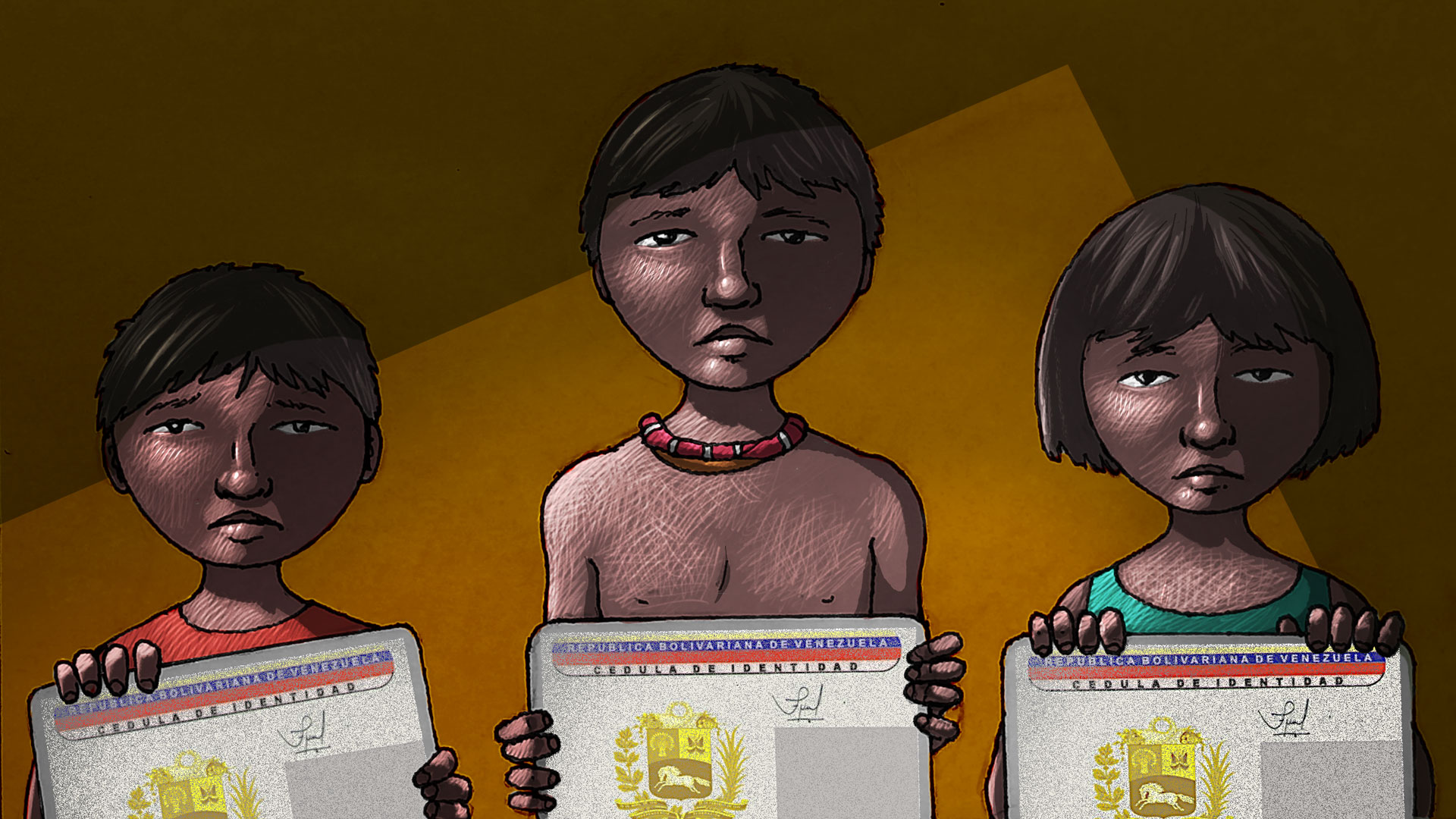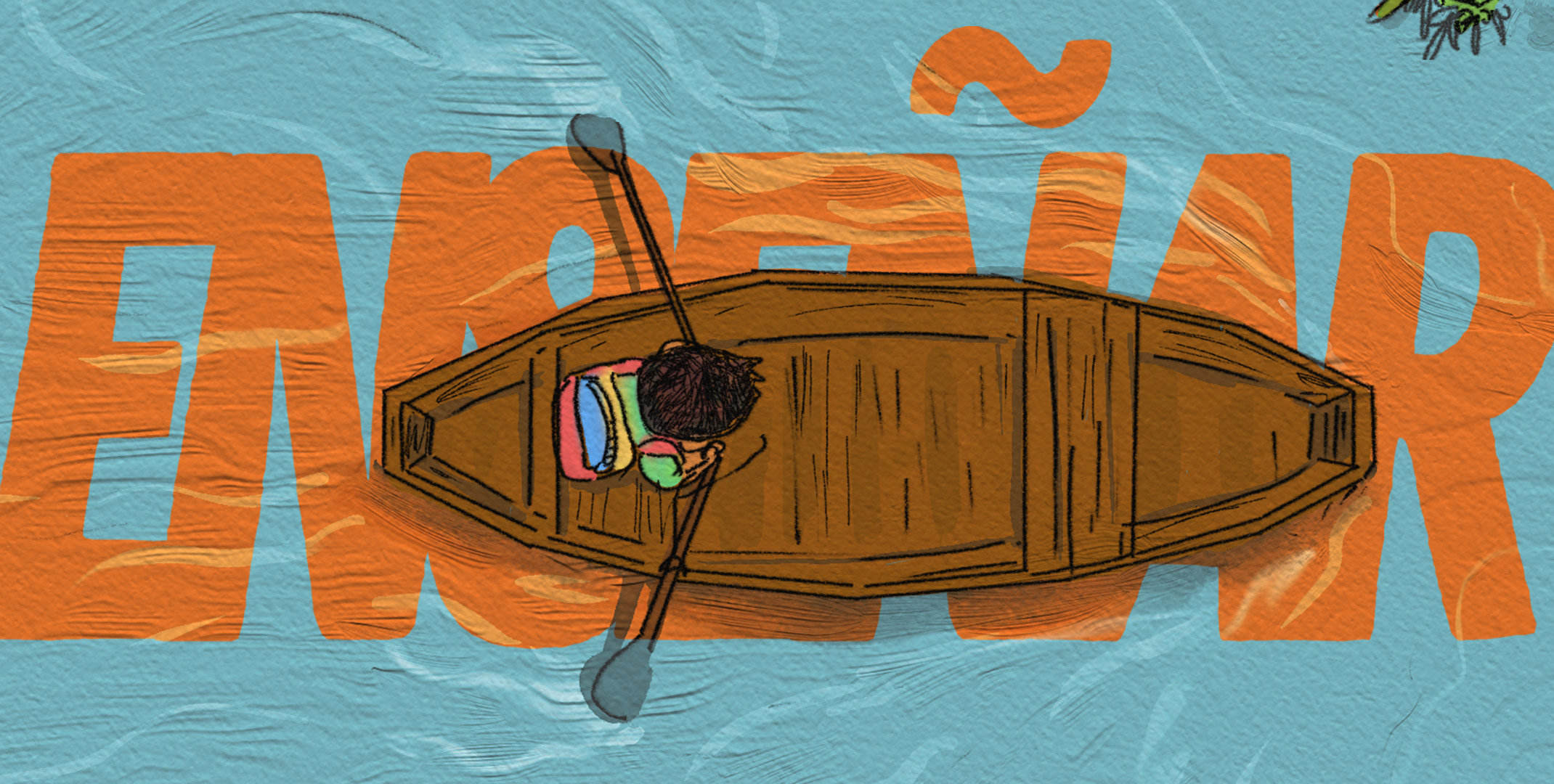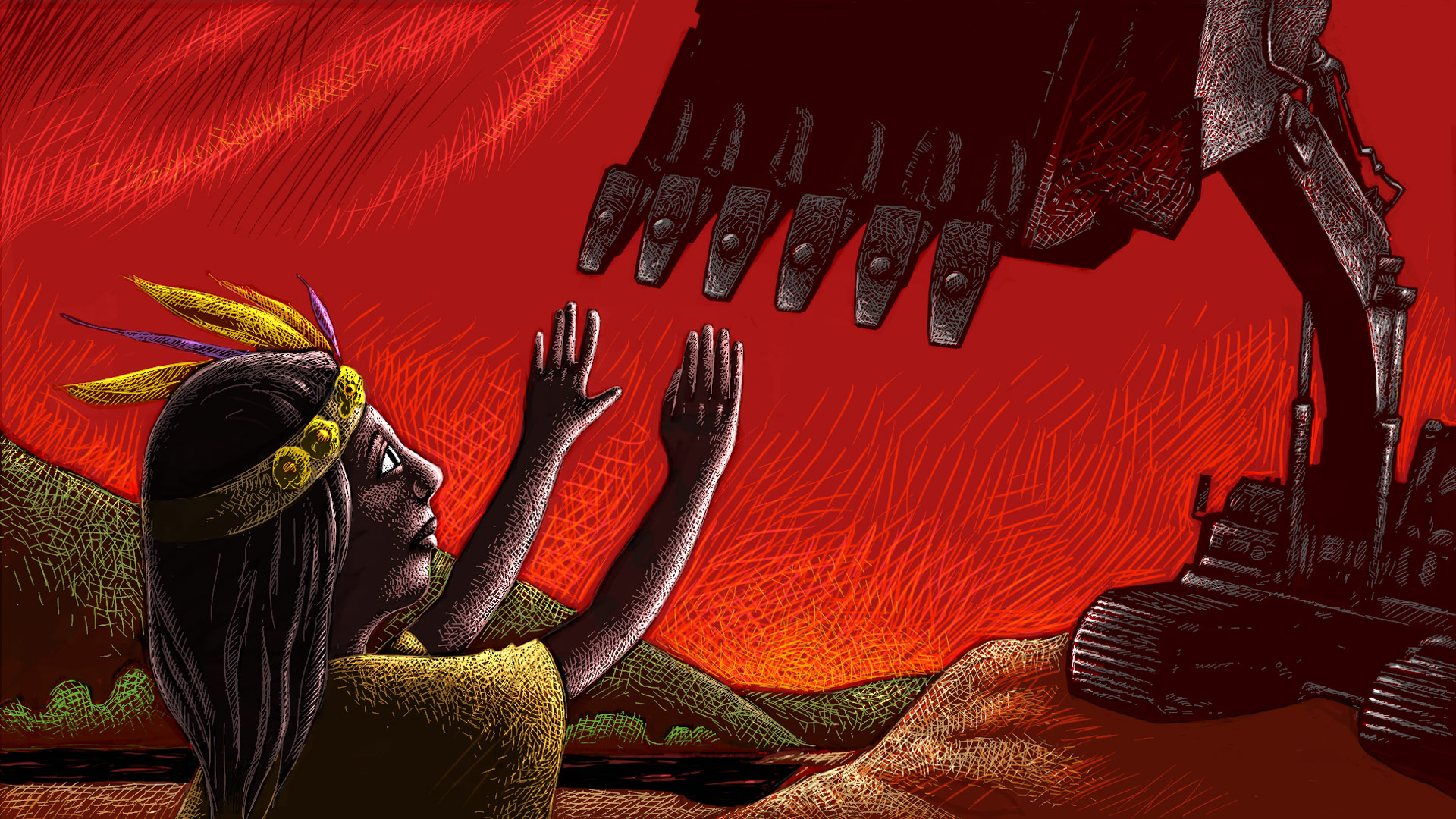Cosme arrived in Wakajara de Manamo in 2016. He was born and raised downstream on the other side of the river in the Warao community of Santo Domingo de Wakajarita, which belongs to the Libertador municipality of the state of Monagas, but for his people it is all part of the same land.
He never felt strongly about pursuing a particular career, but rather about working in whatever field he could be of help to others. Since he had always enjoyed learning and teaching, he took a job as a schoolteacher in Wakajara de Manamo. He was 25.
That is how he met Bárbara Lárez, a social and environmental project manager for Fundación Tierra Viva —an organization that manages sustainable development projects in the Orinoco Delta since 1998. Cosme would gradually establish a close relationship with the organization’s volunteers, which he strengthened every time he and Bárbara went there to do humanitarian work.
As one of the four teachers in his village, in addition to gaining experience communicating with the locals, Cosme took on the role of spokesperson for the community before the municipal and state authorities, and committed himself to ensuring its needs were met. He set out to lift Wakajara de Manamo out of the extreme poverty in which it was stuck.
It was not easy at first. The needs were many. The school where he taught had no desks or chairs. The local ambulatory clinic had no nurses or the most basic supplies. The power plant did not work. Many in the community had no way to grow crops to feed their families and were starving.
And there was another thing that worried him: for lack of a civil registry and vital records office in the area, a large number of children had no birth certificate. Some did, but many 9-year-olds amongst them were yet to be issued an ID. He knew of several over the age of 18 who did not have an ID card, which they need to study or work. He made a list of about 100 young people in that situation.
So, he and the other teachers in the community came up with a plan to take them to the regional office of the Administrative Service of Identification, Migration, and Alien Affairs (SAIME) in order that they could get their documents. Since there was no fuel at the time, they had to go by curiara. They went in groups of between 10 and 20.
But the long journey was the least of their concerns: the biggest challenge was to cut through the red tape: when they arrived at the SAIME, they were told they had to bring a letter issued and stamped by the local communal council. Without such letter, the officials said, their applications would not be processed. They had no choice but to go back and get the letters and have them stamped; only then would they able to go on with the paperwork.
Regardless, little by little, from one trip to the next, the teachers got the 100 Warao in their list issued an ID card.
However, in March of 2023, the SAIME implemented a new system for the issuance of identity cards that involved booking an appointment online on their website. There was no way for them to do that because they had no internet access and their mobile phone signal was limited.
Needless to say, the number of undocumented children in town went on the rise again.
And Cosme knew he could not count on the Government. In 2021, for example, a number of local officials showed up handing out material advertising their candidates to that year’s regional and municipal elections; they made all kinds of promises and offered to distribute bags with food for the kids, whose only meal was arepas made of taro. However, once the elections were over and their candidates reelected, they were never to be seen again.
The experience made Cosme realize that if he wanted to seek support for his cause, he had to turn to his usual allies: the humanitarian organizations.

As a community leader and census taker, and in the absence of a proper civil registry office, Cosme kept a record of the number of births and deaths himself, which he then handed over to the authorities. Coincidentally, that information was also useful to foundations such as Tierra Viva, Sinergia, or Venezuela Sin Límites, which had been working in Wakajara for years.
Every digit was of enormous value, for it embodied the life of a kid, the life of an adult, the life of a pregnant woman, or the life of an older person. The data also allowed him and the foundations to design projects that fit their reality.
When the organizations in question needed a census-type survey, Cosme would summon the people from the community and make lists with the information provided by the attendees. If he had to visit individual houses in remote areas, he would do so diligently. For him, it was a duty that had to be fulfilled.
In 2022, Tierra Viva started the “Water, Health and Livelihood for the Warao” project, with the support of the United Nations. Through the Venezuelan Humanitarian Fund, they served 16 Indigenous communities in the Orinoco Delta and gave them water purification tablets, bags with food, and tools for fishing and agriculture. Land cultivation had become difficult in the area following the construction of a levee in 1966 that led to the salinization of the river waters, but specialists in the field gave the locals training on how to work it properly.
Much of this was possible thanks to the census that Cosme and other Indigenous leaders conducted in their communities, which they use to calculate the aid to be distributed and to identify the people’s specific needs.
A group of doctors visited the community shortly after Cosmo returned from a Sinergia workshop in Tucupita in February of 2024. As the children were being vaccinated outside the school, and the pregnant women were getting prenatal care, he could not help but think of all the things that still needed to be done, including repairing the power plant and housing projects. But he was certain that, although they road ahead was very long, as long as he had the support of the foundations and international organizations, the journey would be slow but steady.
Venezuela may not have signed the Escazú Agreement —he thought to himself—, but the people of Wakajara de Manamo did in some way, because his censuses, more than just plain figures, were the proof of life of an Indigenous community that refused to disappear



